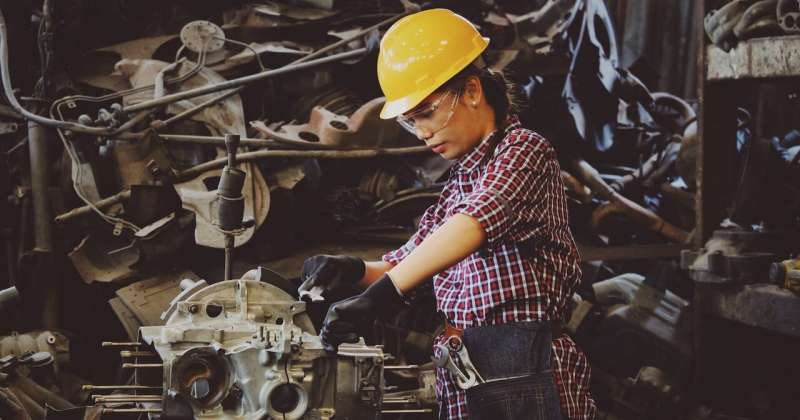Blueprint highlights gender-parity push in manufacturing

One manufacturer embedded women-welcoming language in its recruitment materials.
Another offset the cost of child care to retain its female workers during the pandemic.
With female participation in Ontario's manufacturing workforce stubbornly stuck at less than one-third for the last 40 years, it's no accident that some companies are more successful at attracting and keeping women, says a new blueprint on gender diversity in Ontario manufacturing, a report for the Trillium Network for Advanced Manufacturing with two Western graduate students among its three authors .
"There are so many companies that don't walk the talk," said co-author Eva Kwan, a Ph.D. candidate in industrial organizational psychology. "We've highlighted five that do. They're making investments in their people and processes, and it shows."
The report includes case studies of five Ontario manufacturers—Honda of Canada Mfg., Sanofi Pasteur Canada, Muskoka Brewery, MAD Elevator Inc.and Cascades paper company—that have worked intentionally to recruit and retain women employees.
"It makes economic and moral sense," said co-author Brendan Sweeney, managing director of the Trillium Network. "It's good business, good economics and it's the right thing to do."
The Trillium Network, a provincially funded non-profit dedicated to raising awareness of Ontario's advanced manufacturing ecosystem, operates out of offices at Western but is independent of the university.
Women make up just 29 percent of Ontario's manufacturing workforce, a number that has barely shifted in 40 years even though the sector is headed for labor shortages as employees age and retire, the report said.
"Even if it's been about 29 percent women for decades, it doesn't have to stay that way," said co-author Talissa Watson, an MSc candidate with a focus on business analytics at Ivey Business School. Both she and Kwan undertook the work as Mitacs research interns.
"What this paper says is that there are ways to improve upon this, ways to move that dial and inspire companies to know that it is possible," Watson said.
For example, MAD Elevator, a company of about 200 employees, recognized the pandemic was having a disproportionate impact on those who are also parents and caregivers. To help with child care when schools and daycares were closed, the company paid employees' relatives the equivalent of the federal government's CERB amount to fill in. The company also loaned laptops to families to help with online learning.
Honda in Alliston, Ont., launched a Women@Honda recruitment program that included a tour and question-and-answer session and resulted in more female hires. The percentage of women on Honda's production floor has almost doubled in three years.
Pharmaceutical firm Sanofi Pasteur's push includes using gender-neutral and inclusive language in recruitment materials and job ads, having diverse recruiters, and offering staggered start times for shifts. Women make up nearly half of leadership positions and 47 percent of production and quality-control employees at Sanofi.
Muskoka Brewing has achieved near gender parity, and its slogan "people first, pints second" emphasizes its commitment to work-life balance. It is also the first craft brewery to commit to paying a living wage.
Cascades committed to gender parity in 2016, and its job ads include testimonials from women employees in occupations where the female participation rate is low. The company's performance reviews and leadership training build in equity and inclusion. Cascades is one of just three Ontario manufacturers to receive a bronze-level gender parity certification from Women in Governance in 2019.
Kwan noted these success stories are taking place across different manufacturing sectors, in workplaces small and large, and in unionized and non-unionized environments.
The blueprint's 10 recommendations suggest manufacturers:
- make gender parity intentional, with strategies embedded in company culture and values;
- track progress with a data feedback loop;
- understand that work-life flexibility can benefit everyone;
- involve women in designing, implementing and reviewing policies;
- recognize and minimize recruitment biases in language, images and compensation;
- identify pathways for promotion and development;
- provide tools and training.
Sweeney said policies and practices that benefit women in the workplace also benefit households, communities and companies' bottom lines.
"There aren't a lot of arguments against doing this," he said. "I'd challenge you to find one besides 'it's going to be hard.'"
The authors hope other manufacturers will read the blueprint, glean at least some recommendations they can implement, and start now.
"We've said here's what five companies have done," said Sweeney. "I think it's a bit of a buffet approach: here's all these things, just try one of them to see if it works."
Provided by University of Western Ontario




















